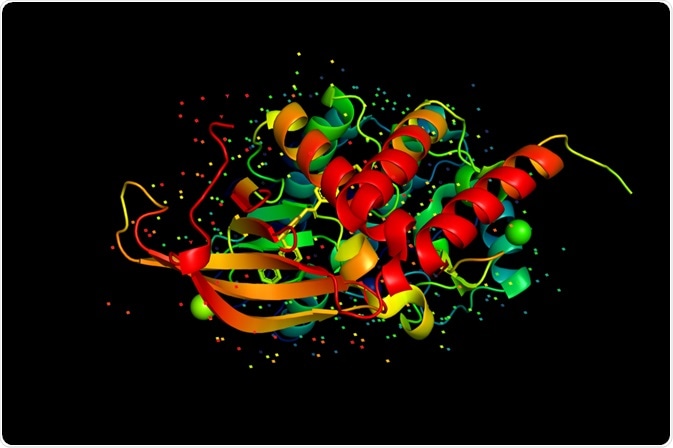High throughput crystallization techniques are frequently employed to generate the large numbers of high purity protein crystals needed for protein crystallography. These attempt to crystallize proteins using a number of standardized protocols to generate a diverse set of protein crystals.
From this first round of generated crystals, unsuccessfully or poorly grown crystals are screened out and the methods used to create the best crystals are further optimized. Such screening processes can be repeated several times in order to create the best crystals possible.
 Sergei Drozd | Shutterstock
Sergei Drozd | Shutterstock
Screening provides optimal conditions for crystallization of a particular protein to be determined, and in well-funded research institutions and manufacturing facilities is performed by robots that handle liquids in the nanoliter range.
Discoveries generated by high-throughput screening have led to the creation and sale of commercial kits that can be used on the benchtop by independent scientists, and are intended to create ideal crystals from particular proteins without the need for lengthy optimization procedures.
What properties are adjusted during screening?
Pure proteins must be obtained to generate ideal crystals. Following this, the solubility of the protein must be determined and so the correct ratio of protein and solvent added to create a state of supersaturation can be used. It is after these stages that screening generally begins.
The chemistry involved in crystallization is potentially very complex, though the parameters that are frequently adjusted during optimization are: pH, dielectric constant of the solvent, salt presence in order to adjust the hydrophilic or hydrophobic interactions between the proteins, and the presence and concentration of stabilizing agents.
Buffering agents are used to fine-tune the pH of the solution. Proteins possess local electric charges, meaning that a negatively charged area of one protein is likely to interact with a positively charged region of a neighboring protein. Careful manipulation of the pH using buffering agents ensures that the proteins are neutral, at their isoelectric point.
Organic solvents are used to adjust the dielectric constant of the solution, which affects the relative charge of the proteins, and also to adjust the solubility of the protein. Organic solvents in high concentration tend to aggregate proteins, however.
Salts are added to the solution to generate salt bridges and encourage favorable protein-protein interactions. They are also more likely to interact with water molecules than the proteins themselves, meaning that the proteins must interact with one another through hydrophobic and hydrophilic interactions instead. Polymers are also added for this purpose, though interactions with the polymer occur through solvent exclusion effects rather than possessing a high affinity with water.
Various other additives are added to encourage stabilization, crystallization, and lattice formation, and discourage protein aggregation.
Which scientific fields use protein crystallization screening?
High-throughput protein crystallization screening is useful for any academic or industrial application for which the creation of well-refracting protein crystals is essential, most commonly for the purpose of accurately determining the structure of that protein.
Pharmaceutical companies are among the most heavily invested in the technology as proteins are common drug targets, along with nucleic acids and even viruses, the structures of which can also be determined through crystallography.
Fundamental biological research into the structure and function of macromolecules is rapidly being accelerated by advances in high-throughput screening, and over 100,000 proteins are currently registered in the Protein Data Bank.